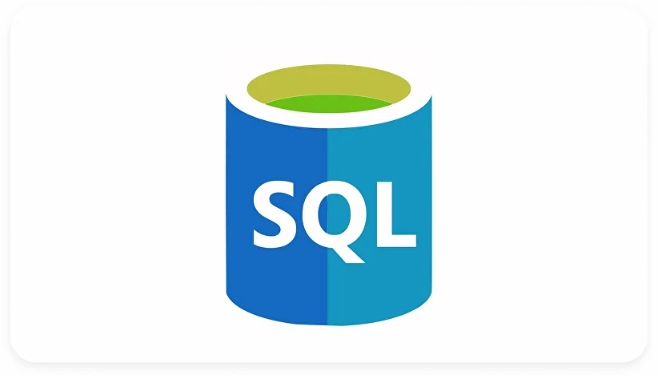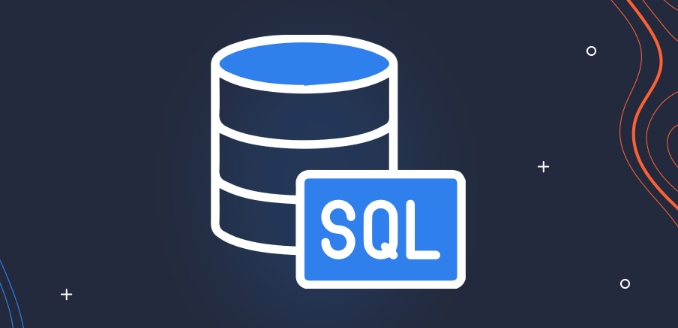Query Hint is a tool in SQL query optimization that forces databases to execute queries in a specified manner, suitable for unstable performance, existing optimization directions, temporary solutions, and specific business needs. Common types include table prompts (such as NOLOCK, READPAST, INDEX), query-level prompts (such as RECOMPILE, MAXDOP, LOOP JOIN) and combination use, but attention should be paid to prioritizing verification in the test environment, monitoring the execution plan, reviewing the effectiveness regularly, and keeping documentation.

Query Hint is a very useful tool in SQL query optimization, but many people are not clear about its usage scenarios and methods. Simply put, Query Hint is a means of forcing databases to perform queries in a specified way. It can improve performance in certain situations, but can also have side effects, especially if its impact is not fully understood.

Here are some key points you really need to know.
What is Query Hint?
Query Hint is a directive written in SQL statements to guide the database engine to execute queries. They are usually used to override the default query optimization behavior, such as forcing an index, changing the connection method, or controlling the parallelism.

For example:
SELECT * FROM Orders WITH (NOLOCK)
Here WITH (NOLOCK) is a typical table-level hint that tells the database not to add shared locks and allows reading of uncommitted data.

When should I consider using Query Hint?
Using Query Hint should be a conscious choice, not arbitrary addition. Here are some common applicable scenarios:
- Query performance is unstable : When a certain SQL performs greatly at different times, it may be due to changes in statistical information, which may cause fluctuations in execution plans.
- There is already a clear optimization direction : for example, you know that an index is more suitable, but the optimizer is not selected.
- Temporary solution : As a short-term optimization method when structures cannot be modified immediately or statistics are updated.
- Specific business logic requirements : If report-class queries need to avoid lock upgrades, you can use
WITH (NOLOCK).
?? Note: Query Hint has higher priority than the optimizer's judgment. If used improperly, it may lead to performance degradation or even data consistency problems.
Common Query Hint and usage suggestions
1. Table Hints
This type of prompts act on tables or views, the most common ones are WITH (NOLOCK) , WITH (READPAST) , WITH (INDEX(...)) , etc.
- NOLOCK : Suitable for read-only queries, avoid blocking, but will read dirty data.
- READPAST : Skip locked rows, often used for queue processing.
- INDEX : Forces the use of specific indexes, suitable for index selection where significantly better than the default.
Example:
SELECT * FROM Customers WITH (INDEX(IX_Customers_Name))
2. Query-Level Hints
These prompts are placed at the end of the SQL statement to control how the entire query is executed.
- OPTION (RECOMPILE) : Recompile the execution plan every time it is executed, suitable for situations where the parameter value is large and the plan is not good.
- OPTION (MAXDOP n) : limits parallelism and prevents resource contention.
- OPTION (LOOP JOIN) or HASH JOIN : Forced connection method, suitable for scenarios where the optimal connection strategy is known.
Example:
SELECT * FROM Orders o JOIN Customers c ON o.CustomerID = c.CustomerID OPTION (LOOP JOIN)
3. Combination of query prompts
In some cases, multiple hints can be combined to achieve the purpose, such as:
SELECT * FROM Sales WITH (NOLOCK, INDEX(IX_Sales_Date))
However, be aware that not all hints can coexist, and some combinations may report errors.
Notes on using Query Hint
- Test environment first : Do not use unverified hints directly in production environments.
- Monitor the execution plan : After using hint, be sure to check whether the actual execution plan meets expectations.
- Regular review : As data grows and structure changes, the once-effective hint may no longer apply.
- Documentation : Explain why this hint is used to facilitate subsequent maintenance.
Basically that's it. Although Query Hint is powerful, it is an "advanced gameplay" and is not recommended for beginners to use it frequently. Mastering the basic skills of query optimization, such as index design and statistical information management, is often more reliable than relying on Hint.
The above is the detailed content of SQL Query Hint Usage: When and How to Apply Them. For more information, please follow other related articles on the PHP Chinese website!

Hot AI Tools

Undress AI Tool
Undress images for free

Undresser.AI Undress
AI-powered app for creating realistic nude photos

AI Clothes Remover
Online AI tool for removing clothes from photos.

Clothoff.io
AI clothes remover

Video Face Swap
Swap faces in any video effortlessly with our completely free AI face swap tool!

Hot Article

Hot Tools

Notepad++7.3.1
Easy-to-use and free code editor

SublimeText3 Chinese version
Chinese version, very easy to use

Zend Studio 13.0.1
Powerful PHP integrated development environment

Dreamweaver CS6
Visual web development tools

SublimeText3 Mac version
God-level code editing software (SublimeText3)
 How to find columns with a specific name in a SQL database?
Jul 07, 2025 am 02:08 AM
How to find columns with a specific name in a SQL database?
Jul 07, 2025 am 02:08 AM
To find columns with specific names in SQL databases, it can be achieved through system information schema or the database comes with its own metadata table. 1. Use INFORMATION_SCHEMA.COLUMNS query is suitable for most SQL databases, such as MySQL, PostgreSQL and SQLServer, and matches through SELECTTABLE_NAME, COLUMN_NAME and combined with WHERECOLUMN_NAMELIKE or =; 2. Specific databases can query system tables or views, such as SQLServer uses sys.columns to combine sys.tables for JOIN query, PostgreSQL can be used through inf
 What is the difference between SQL and NoSQL
Jul 08, 2025 am 01:52 AM
What is the difference between SQL and NoSQL
Jul 08, 2025 am 01:52 AM
The core difference between SQL and NoSQL databases is data structure, scaling method and consistency model. 1. In terms of data structure, SQL uses predefined patterns to store structured data, while NoSQL supports flexible formats such as documents, key values, column families and graphs to process unstructured data; 2. In terms of scalability, SQL usually relies on stronger hardware on vertical expansion, while NoSQL realizes distributed expansion through horizontal expansion; 3. In terms of consistency, SQL follows ACID to ensure strong consistency and is suitable for financial systems, while NoSQL mostly uses BASE models to emphasize availability and final consistency; 4. In terms of query language, SQL provides standardized and powerful query capabilities, while NoSQL query languages ??are diverse but not as mature and unified as SQL.
 When to use SQL subqueries versus joins for data retrieval.
Jul 14, 2025 am 02:29 AM
When to use SQL subqueries versus joins for data retrieval.
Jul 14, 2025 am 02:29 AM
Whether to use subqueries or connections depends on the specific scenario. 1. When it is necessary to filter data in advance, subqueries are more effective, such as finding today's order customers; 2. When merging large-scale data sets, the connection efficiency is higher, such as obtaining customers and their recent orders; 3. When writing highly readable logic, the subqueries structure is clearer, such as finding hot-selling products; 4. When performing updates or deleting operations that depend on related data, subqueries are the preferred solution, such as deleting users that have not been logged in for a long time.
 Comparing Different SQL Dialects (e.g., MySQL, PostgreSQL, SQL Server)
Jul 07, 2025 am 02:02 AM
Comparing Different SQL Dialects (e.g., MySQL, PostgreSQL, SQL Server)
Jul 07, 2025 am 02:02 AM
SQLdialectsdifferinsyntaxandfunctionality.1.StringconcatenationusesCONCAT()inMySQL,||orCONCAT()inPostgreSQL,and inSQLServer.2.NULLhandlingemploysIFNULL()inMySQL,ISNULL()inSQLServer,andCOALESCE()commonacrossall.3.Datefunctionsvary:NOW(),DATE_FORMAT()i
 What is a composite primary key in SQL?
Jul 08, 2025 am 01:38 AM
What is a composite primary key in SQL?
Jul 08, 2025 am 01:38 AM
AcompositeprimarykeyinSQLisaprimarykeycomposedoftwoormorecolumnsthattogetheruniquelyidentifyeachrow.1.Itisusedwhennosinglecolumncanensurerowuniqueness,suchasinastudent-courseenrollmenttablewherebothStudentIDandCourseIDarerequiredtoformauniquecombinat
 Advantages of Using Common Table Expressions (CTEs) in SQL.
Jul 07, 2025 am 01:46 AM
Advantages of Using Common Table Expressions (CTEs) in SQL.
Jul 07, 2025 am 01:46 AM
The main advantages of CTEs in SQL queries include improving readability, supporting recursive queries, avoiding duplicate subqueries, and enhancing modular and debugging capabilities. 1. Improve readability: By splitting complex queries into multiple independent logical blocks, the structure is clearer; 2. Support recursive queries: The logic is simpler when processing hierarchical data, suitable for deep traversal; 3. Avoid duplicate subqueries: define multiple references at a time, reduce redundancy and improve efficiency; 4. Better modularization and debugging capabilities: Each CTE block can be run and verified separately, making it easier to troubleshoot problems.
 How to find the second highest salary in SQL
Jul 14, 2025 am 02:06 AM
How to find the second highest salary in SQL
Jul 14, 2025 am 02:06 AM
There are three core methods to find the second highest salary: 1. Use LIMIT and OFFSET to skip the maximum salary and get the maximum, which is suitable for small systems; 2. Exclude the maximum value through subqueries and then find MAX, which is highly compatible and suitable for complex queries; 3. Use DENSE_RANK or ROW_NUMBER window function to process parallel rankings, which is highly scalable. In addition, it is necessary to combine IFNULL or COALESCE to deal with the absence of a second-highest salary.
 How to create empty tables with the same structure as another table?
Jul 11, 2025 am 01:51 AM
How to create empty tables with the same structure as another table?
Jul 11, 2025 am 01:51 AM
You can use SQL's CREATETABLE statement and SELECT clause to create a table with the same structure as another table. The specific steps are as follows: 1. Create an empty table using CREATETABLEnew_tableASSELECT*FROMexisting_tableWHERE1=0;. 2. Manually add indexes, foreign keys, triggers, etc. when necessary to ensure that the new table is intact and consistent with the original table structure.






